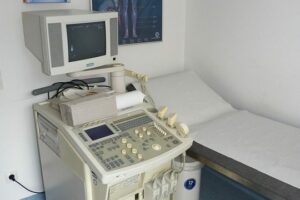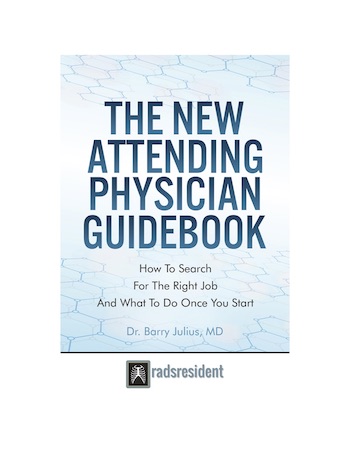Blurry vision setting in; eyelids drooping just wanting to shut; difficulty communicating; and impending malaise. Rarely would I have any chance whatsoever to lay my head down even once. The films would keep on streaming in. These feelings were typical on that first night of call on a 1 or 2 weeknight float rotation block or the occasional Saturday overnight calls that we would have to do every once in a while. I dreaded those days. But, it is still standard for many radiology residency programs. It is almost impossible not to have at least a few overnight shifts like the ones I just described.
At one point or another, many radiology programs and residents have come up with different schedules and options to minimize this extreme fatigue. Some have instituted night float schedules. Others maintain a standard rotating call schedule Q4,5, or 6. Some have long and short call schedules.
The choice to do one system or another is not so clear-cut. Programs have many considerations before deciding to have either of these systems before implementation. Although I tend to favor the night float system since I remember it mitigated fatigue after the initial day or two of calls when taking overnights, the decision to have a night float program is probably unsuitable for all programs.
So what factors would lead one program to have a night float system and another to have a standard call system? Some of the issues we need to address are the size of the program, attending coverage, resident preferences, program director preferences/department culture, number of nighttime studies, and emergency department requests. I will also review each system’s disadvantages and advantages, allowing a program to decide which approach is best.
Factors For Instituting A Night Float Coverage System
Size of the Program
The smaller the program is, the less likely there will be adequate coverage for rotations during the daytime, let alone the nighttime. In fact, at many programs, a small residency cohort prevents the institution of a night float system. In a program with three or fewer residents per year, it may not be possible to have a resident out every night to be on call without severely compromising resident education. Also, many programs cannot cover daytime obligations without a night float system.
Attending Coverage
Institutions with attending nighthawk coverage at nighttime allow more flexibility for scheduling of night float. Some programs do not need full-time resident coverage during the nights and may share call obligations with the attending. Therefore, it is significantly easier to institute a night float system for the residency program.
Resident Preferences/Culture
In some residencies, the radiology residents have instituted a night coverage system because of the preferences of the individual residents. Many residents have fully invested in a given scenario. If the system is changed, there is a perception of “unfairness” because some residents may need to take more or fewer calls than they would have in the old system. So, the night coverage system becomes engrained into the fabric of the residency program.
Also, the program director may set up this schedule to accommodate specific residency daytime programs. A nighttime schedule may allow the resident to maximize daytime educational opportunities. For some programs, that may mean either a standard cyclical call schedule, and for other programs, it may mean a night float schedule.
Program Director/Chairman Preferences/Department Culture
In many programs, the leaders may institute nighttime coverage based on their preferences. The program director or chairperson may believe a night float system or standard call schedule may be better for a residency program. Or, perhaps there are coverage requirements that the department desires. In either case, the decision is not up to the residents.
Number of Studies
Perhaps you are in a residency program that is a level 1 trauma center with significant numbers of ER studies at night time. Some programs are so busy that they may need more than one resident or attending on-call each evening. This factor may allow less flexibility in scheduling a night float system since a program may not be able to accommodate the call coverage at nighttime.
Emergency Department Factors
Emergency departments may have specific requirements for radiology coverage at nighttime. Some programs may only want to have senior residents take call. Others specifically want attendings to cover during the evening. Depending upon the demands of the emergency department, this may dictate the numbers, type, and presence of residents or attendings on call. A night float system or standard call system may reflect the whims of the emergency department.
Advantages/Disadvantages of Night Float And Standard Call
Night float
Most people think night float coverage for a week or two mitigates fatigue the most. The body tends to get used to the nighttime schedule over time, allowing the resident to function better on call. Sure, the first few days can be challenging because the body and mind have to adjust. But overall, the experience is much improved.
On the other hand, when you are on a night float system, the resident may lose touch with the “educational” aspects of the residency program. You miss daytime lectures, conferences, and attending readouts for long periods. While the time spent on night float is essential for training, receiving all the benefits of daytime resident education is impossible. You may lose out on understanding the context of the images you interpret. Education, in this sense, may also be compromised.
Standard Call
Sometimes a Q4, 5, or 6-day call schedule integrates better with a program than a night float system, allowing the resident a better overall experience. The resident does not miss all the noon conferences and educational experiences they would miss over a long block on a night float.
The two significant disadvantages to the cyclical call schedule are overnight fatigue and the “lost day.” As I mentioned, I always found it much more taxing to have an occasional overnight than a night float block because my body never adjusted to the system, just like most residents. In addition, the resident loses an extra day of residency experience every time they work because they are obligated to have a day off afterward, “the post-call day.” This loss can significantly decrease the educational opportunities for the resident.
Residency Call- Night Float or Overnight Calls?
Nighttime call is a crucial facet of every radiologist’s education. Whether or not you have a say in constructing your program’s night coverage system, you now realize that what works for one program may not work for yours. The decision to have one or another method can be complex, but it is important to weigh each of the factors to come up with an outcome. The key is to make the learning opportunity pleasant and mitigate fatigue. Hopefully, your residency has chosen your institution’s most appropriate night coverage system!











